" Kukuri traps " are often used to capture wild animals such as wild boars and deer. As the name suggests, the animals are captured by tying their legs with wire.
There are various types of tying traps in the world, and some people buy commercially available ones, while others make their own using materials.
Commercially available traps use materials that match each trap and are assembled with proper balance, so especially beginners should choose commercially available ones.
On the other hand, there are many veterans who prefer to build their own instruments because it is easier to tune them to their liking, as it is cheaper to make your own. However, in addition to having to select and arrange the materials yourself, you will also need experience in capturing, crafting skills, and equipment.
This time, I would like to introduce the materials necessary for tying traps for those who want to try making their own.
Materials needed for tying traps
To create a tying trap, you first need to gather the materials and tools. What you need depends on the type of trap, but here we'll take a flip-up tying trap as an example. A flip-up type tying trap is roughly divided into a " tread " part and a " spring " part.
Materials required for the spring part
The spring part consists of a wire part and a spring for catching prey, and a wire part for attaching to the strut. It is necessary to create a device that integrates these and tightens the wire loop with the force of the spring.
(1) Push spring
The spring (push spring) used for tying traps is a part that greatly affects the capture rate. The spring is set in a compressed state, and when the tying trap is activated, the force of the spring returning (extending) tightens the wire and binds the animal's legs.
Springs are made of stainless steel or plated, but if you want to prevent deterioration due to rust, choose stainless steel, and if you want strength, choose plated. *In addition, our shop uses stainless steel wire rods that are less likely to sag, and handles sizes suitable for PVC pipes with an inner diameter of φ13 mm.
②Wire rope
Wire is a must-have in any tie-up trap.
A total of 2 wires are required: the part that fixes the wire to the tree that serves as the support, and the working part that binds the animal's legs. If the wire is too long, twists and kinks will easily occur, and the range of motion of the captured beast will be widened. It will end up.
The standard length of each wire is about 2 meters, and it is a good idea to adjust it according to the installation location and preferences. It's good to prepare a small amount by selling it, but wire is a consumable item for tying trapping, so it's a good idea to buy it in bulk, such as a 100m roll .
③Aluminum sleeve
The aluminum sleeve is a material that is absolutely necessary to make a loop with the wire rope in ②. Note that the size of the sleeve that fits will change depending on the wire rope diameter.
Aluminum sleeves, which are easy to process, are mainly used for tying traps (stainless steel sleeves are also available on the market, but they are more expensive than aluminum). When making a loop, pass the wire twice (back and forth) and secure it by caulking twice. The wire can be fixed by passing the wire rope through the aluminum clamp and tightening it with a crimping tool such as an arm swager .
④ Sarkhan
This brass part is also called " twisting " because it prevents twisting and twisting of the wire rope. As described in the wire rope item in ②, connect the wire that attaches to the post and the wire that tightens the boar's leg with a swivel.
By connecting with Sarkan, it becomes difficult to twist, so the wire is also difficult to cut. The use of tying traps without Sarkans is prohibited for the capture of wild boars and sika deer.
⑤ Shackle
A shackle is a convenient part that has a U-shaped metal fitting and a screw, and is used when fixing a wire to a tree that serves as a support. After wrapping the wire around the post, secure it with a shackle.
⑥Banging metal fittings
Once the wire is tightened , it has a structure that makes it difficult to return. The more the captured beast pulls on the wire, the less likely it will come loose. In addition, when priority is given to smooth operation, it may be assembled without using the tying metal fittings.
⑦ Over-tightening prevention metal fittings
It is a metal fitting to keep the wire rope loop (snare) at a certain level so as not to tighten the animal's legs excessively. Without this fitting, the snare would be too tight, so this is to prevent that.
At our store, we use the one with a stopper function, but you can use any metal fitting that functions like a spacer to prevent excessive tightening of the wire. When catching wild boars and sika deer, it is prohibited to use traps that are not equipped with over-tightening prevention fittings.
⑧ Spring stopper
A stopper for fixing the spring in a compressed state. Without it, the spring cannot be held in compression in the first place, so it is an essential material.
At our store, we use a type of stopper that is fixed with a thumbscrew, and it can be firmly fixed with two thumbscrews.
⑨PVC pipe
It is a PVC pipe for storing a compressed spring when setting a tying trap. It can be used as a trap even without a PVC pipe, but when the spring is compressed with a PVC pipe, it is easier to set up than when the spring is exposed, and soil and grass get caught in the spring during operation. It has the advantage of preventing it from being caught and reducing the pain of the spring after capture.
Materials needed to make treads
As the material for the part where the beast puts its feet, we recommend using the control panel because it is the easiest to process. Also, it is necessary to prepare a pedestal that matches the cut size of the control panel. The pedestal is made by processing aluminum or by cutting a PVC pipe.
The most important part is the arm around which the snare is wound. There are people who process aluminum and iron, and there are people who skillfully process PVC.
The diameter of the tying trap (snare diameter) that can be used varies depending on the region where the trapping activity is carried out, so please check with your local government when using tying traps.
What you need to know before building a tying trap
There are rules that must be observed when catching wild boars and deer in traps. As for the requirements of the trap itself, the use of tying traps that fall under the following is prohibited in principle.
1: Something that lifts prey
2: Wire diameter less than 4mm
3: Those without "return"
4: Those without "tightening prevention metal fittings"
5: The diameter (in the case of an oval, the smaller one) must be over 12cm
6: Hanging 31 or more traps by one person
Regarding *5, diameter restrictions have been relaxed in many regions. Please check with the section in charge of the local government where the capture is being carried out for the presence or absence of regulations.
summary
A typical flip-up tying trap consists of the materials introduced above. Depending on the structure of the trap and your preferences, the necessary materials will change, but if you have the above materials, you can create a standard one without any problems.
However, since the tying trap directly binds the prey, a large force is applied to each part. It is a good idea to keep in mind that the components of thetying trap are basically consumables, not only the wire but also other parts.

 箱罠
箱罠
 くくり罠
くくり罠
 パーツ類
パーツ類
 電気柵
電気柵
 自作キット
自作キット
 防獣グッズ
防獣グッズ
 監視カメラ
監視カメラ
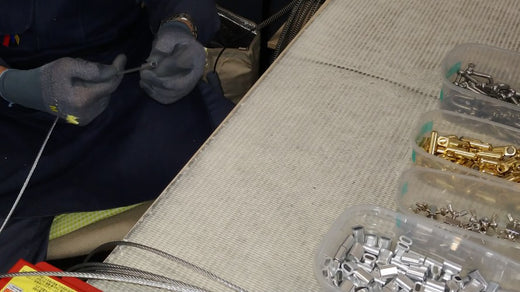
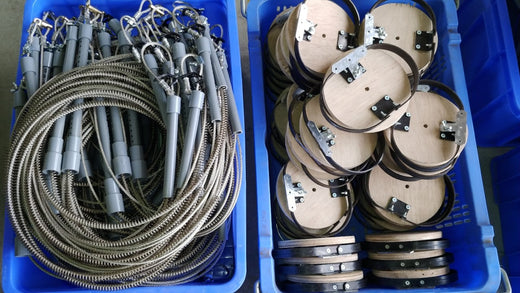

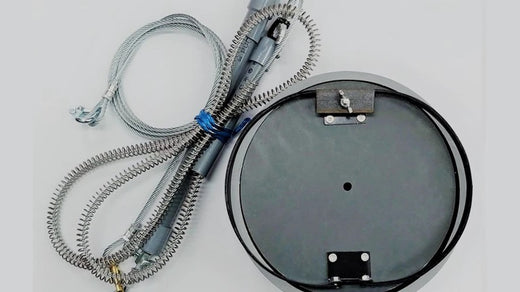
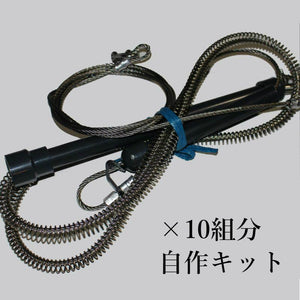
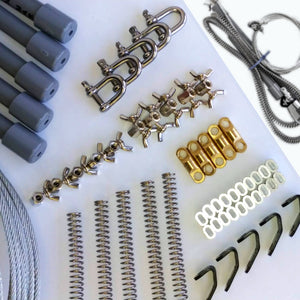
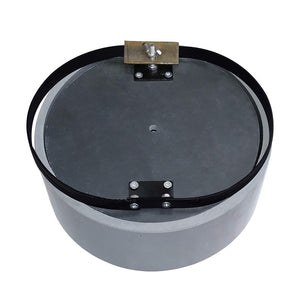
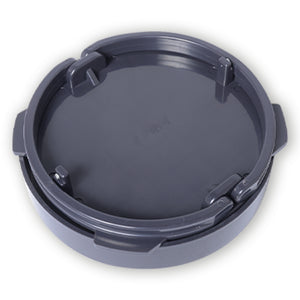

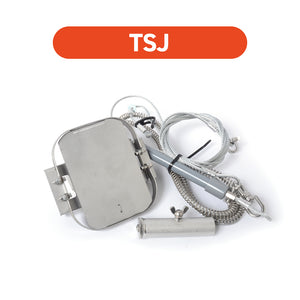
![Swager (Crimping machine, wire cutter) [Hand]](http://inohoi.jp/cdn/shop/products/559168fd9a5204ad15b257e7f05fd3ed_300x300_crop_center.progressive.jpg?v=1663139566)
![Swager (Caulking machine, Wire cutter) [Desktop]](http://inohoi.jp/cdn/shop/products/11f20abc0cac57bb0401c63c01688301_300x300_crop_center.progressive.jpg?v=1663139545)
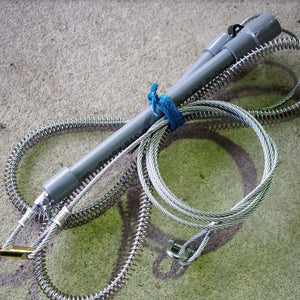
 box trap
box trap
 tying trap
tying trap
 enclosure trap
enclosure trap
 Prevention and avoidance goods
Prevention and avoidance goods
 electric fence
electric fence
 trap surveillance camera
trap surveillance camera
 transportation goods
transportation goods
 Trap detection sensor
Trap detection sensor
 hunting supplies
hunting supplies
 hunting books
hunting books
 Anti-bird goods
Anti-bird goods
 Agricultural materials/machinery
Agricultural materials/machinery
 boar
boar
 deer
deer
 Kyon
Kyon
 monkey
monkey
 raccoon
raccoon
 Badger
Badger
 palm civet
palm civet
 raccoon dog
raccoon dog
 nutria
nutria
 mouse or rat
mouse or rat
 Mole
Mole
 bear
bear
 pigeon
pigeon
 Crow
Crow







